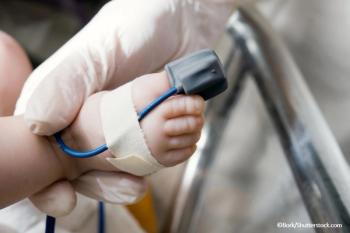
IDSA: Outbreak of Severe Pneumonia Traced to Adenovirus 14
SAN DIEGO -- A potentially deadly form of community-acquired pneumonia linked to adenovirus type 14 has emerged in the Pacific northwest, according to a report presented here.
SAN DIEGO, Oct. 9 -- A potentially deadly form of community-acquired pneumonia linked to adenovirus type 14 has emerged in the Pacific northwest, according to a report presented here.
First encountered in 2005 in Oregon, the viral pneumonia frequently leads to hospitalization and has a 20% fatality rate, Paul Lewis, M.D., of the Oregon State Public Health Department said s at the Infectious Diseases Society of America meeting.
"We recommend obtaining a viral culture in pneumonia patients who lack a specific etiology, especially those with severe disease," said Dr. Lewis. "If adenovirus 14 is detected, anticipate a stormy course. We encourage an infectious disease consultation to discuss the risks and benefits of any specific therapy that might be contemplated."
Recognition of the adenoviral pneumonia began with four patients hospitalized simultaneously at a Portland hospital. Upon comparing notes with physicians at area hospitals, Dr. Lewis and colleagues "almost fell out of our chairs because every hospital we called had recent severe and fatal cases of adenovirus disease."
Investigators followed up the informal communication with a systematic review of all cases of adenovirus disease identified by Oregon clinical laboratories from November 2006 to April 2007. Six months of active surveillance revealed what appeared to be a winter-spring predominant adenovirus disease, as the number of reported cases increased from January through April.
Isolates from the sickest patients were sent to the CDC, which found that almost all the cases involved adenovirus 14, a serotype identified more than 50 years ago but rarely detected since then and never in association with outbreaks.
Dr. Lewis and colleagues at the state health department reviewed analyzed specimens dating back to 1993 and found a few cases of adenoviral disease almost every year. Beginning in 2005 adenovirus 14 was the predominant serotype identified.
Comparison of 31 patients with adenovirus 14 disease and 14 patients with other adenovirus serotypes showed that adenovirus 14 tended to infect older men (median age 52.9), and almost half the cases involved smokers. Most strikingly, adenovirus 14 was associated with a hospitalization odds ratio of 15.9 compared with other adenovirus serotypes.
The most common clinical features leading to diagnosis of adenovirus 14 disease were fever (~80%), tachypnea (75% to 80%), hypoxia (~50%), and hypotension (40% to 45%). Chest x-rays were abnormal in 23 of 24 cases. Radiographic progression was common, including single-lobe disease to multilobe in 55% of cases and lobar disease to adult respiratory distress syndrome in 45%.
All patients received broad-spectrum antibiotics. Dr. Lewis said 22 of the 31 patients with adenovirus 14 disease were hospitalized, and 16 required ICU care. Median hospital and ICU length of stay was seven days. Of the patients treated in the ICU, 13 required ventilatory support and eight had severe hypotension requiring pressor drugs. Seven patients (22%) died.
Risk factors for death or ICU care were a creatinine level greater than 1.2 mg/dL, lymphocyte count less than 100 L, and coinfection with another pathogen. None of those factors remained statistically significant in multivariate analysis.
"This came out of nowhere in 2005 in Oregon," said Dr. Lewis. Acknowledging that almost all of the cases have involved severe illness, he agreed that the scope of the problem could be much larger and involve a broader spectrum of illness severity.
Newsletter
Enhance your clinical practice with the Patient Care newsletter, offering the latest evidence-based guidelines, diagnostic insights, and treatment strategies for primary care physicians.

















































































































































































































































































